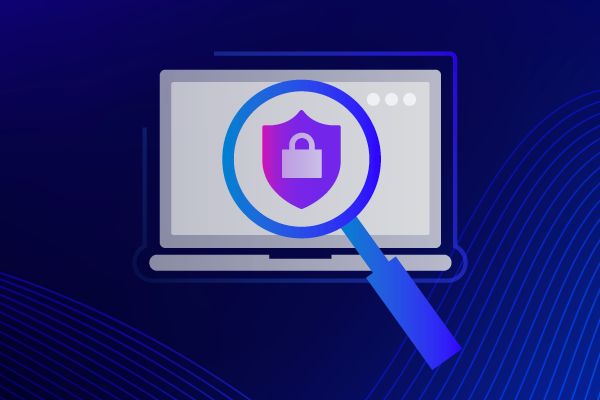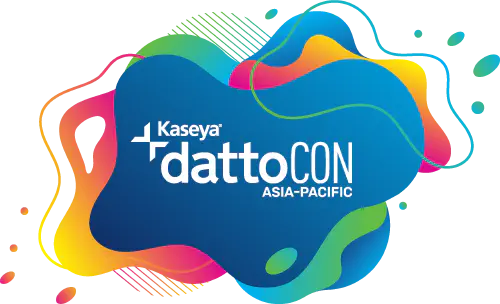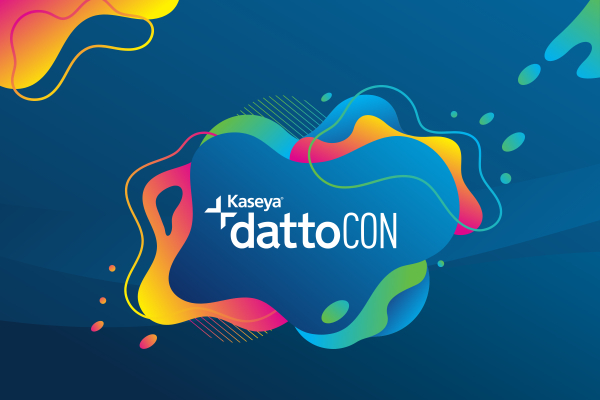What Is SOC 2 Compliance?
In this era of digital transformation, the importance of data security and compliance cannot be overstated. As businesses increasingly move to cloud-based solutions, ensuring the privacy and security of customer data has become paramount. This is where SOC 2 compliance comes into play, setting a benchmark for managing customer data based on specific trust principles. In this post, we’ll delve into what SOC 2 compliance entails, its significance and how it serves as a cornerstone for cyber resiliency. Furthermore, we will explore how Datto supports managed service providers (MSPs) in achieving SOC 2 compliance, enhancing their cyber resiliency in the process.
What is SOC 2 compliance?
Service Organization Control Type 2 (SOC 2) is a critical framework developed by the American Institute of Certified Public Accountants (AICPA) to make certain that service organizations manage and protect customer data based on five foundational trust principles, which are security, availability, processing integrity, confidentiality and privacy. SOC 2 ensures service organizations manage customer data in a manner that protects the interests of both the organization and its clients. It is particularly relevant in today’s digital landscape, where data breaches and cyberthreats are increasingly common.
Importance of SOC 2 in data privacy and security
SOC 2 compliance is not just a regulatory requirement but a demonstration of an organization’s commitment to maintaining high standards of data protection and security. It reassures clients and stakeholders of the robustness of the organization’s security measures, contributing significantly to building trust and credibility.
How to achieve SOC 2 compliance
Unlike other compliance standards that have a checklist of requirements, SOC 2 requires organizations to undergo a rigorous audit by an independent certified public accountant (CPA) firm to demonstrate their adherence to the trust principles applicable to their operations. This makes SOC 2 a symbol of trust and reliability in the eyes of clients, partners and stakeholders, assuring them that their sensitive information is handled responsibly.
It is important to note that SOC 2 compliance is not a one-size-fits-all regulation but a customizable framework designed to meet the unique needs of each organization, making it especially relevant in today’s technology-driven business environment. SOC 2 is tailored for organizations that leverage cutting-edge technologies like artificial intelligence (AI) and cloud computing, setting a high standard for data security and privacy.
What are the five SOC 2 trust principles?
SOC 2 is based on five trust service criteria: security, availability, processing integrity, confidentiality and privacy. These five trust service criteria are the backbone of the SOC 2 compliance framework, each addressing a specific area of data management and protection. Understanding these criteria is essential for any organization aiming to achieve SOC 2 compliance.
Security
The security criterion is the foundation of SOC 2 compliance, emphasizing the protection of information and systems from unauthorized access, disclosure and damage. Security also covers the prevention of data breaches and cyberattacks, ensuring that customer data remains confidential and intact.
Organizations must demonstrate a proactive approach to identifying and mitigating potential security threats, continuously monitoring and updating their security protocols to adapt to new challenges. This involves implementing robust security measures such as firewalls, encryption, access controls and vulnerability scanning.
Availability
Availability pertains to the accessibility of the company’s services, products or systems as stipulated by a contract or service level agreement (SLA). This criterion does not guarantee perfect uptime; instead, it focuses on the organization’s commitment to maintaining operational performance and reliability within agreed-upon bounds.
Organizations must ensure they have the infrastructure and procedures in place to minimize downtime and maintain service delivery even in the face of disruptions. Measures to support availability include redundant systems, disaster recovery plans and performance monitoring.
Processing integrity
Processing integrity ensures that system operations are executed correctly, timely and authorized, guaranteeing that data processing is free from error, omission and unauthorized alteration. This criterion emphasizes the accuracy and completeness of transactions, ensuring that systems perform their functions as expected.
To meet this criterion, organizations must establish and follow processing standards that ensure data integrity throughout its lifecycle, from input through processing to output, including data editing, error detection and quality assurance protocols.
Confidentiality
The confidentiality criterion focuses on protecting information deemed confidential from unauthorized disclosure. This could include business plans, intellectual property and personally identifiable information (PII).
Organizations must classify their data according to sensitivity levels and apply controls accordingly, such as encryption and secure data storage, to protect confidential information from unauthorized access both in transit and at rest. Confidentiality measures must be reviewed and updated regularly to address evolving threats and ensure that sensitive data remains protected.
Privacy
Privacy addresses the organization’s collection, use, retention, disclosure and disposal of personal information in conformity with its privacy notice and principles consistent with the AICPA’s Generally Accepted Privacy Principles (GAPP). This criterion requires organizations to implement policies and procedures that ensure personal information is handled respectfully and in accordance with applicable privacy laws and standards.
Privacy controls include data minimization, consent management, access controls and response protocols for privacy incidents. Organizations must demonstrate their commitment to protecting individuals’ privacy rights through transparent, fair and lawful handling of personal information.
Steps to achieve SOC 2 compliance
Achieving SOC 2 compliance is a meticulous process that involves several critical steps. Each step is designed to ensure that an organization not only meets the stringent criteria set forth by the AICPA but also maintains the integrity and security of the customer data it handles.
Step 1: Conducting a readiness assessment
The journey to SOC 2 compliance begins with a thorough readiness assessment. This initial phase involves evaluating the current state of the organization’s information security and privacy controls against the SOC 2 requirements. It’s crucial to identify the scope of the assessment, which systems and processes will be evaluated, and which of the trust service criteria apply.
Organizations must review their existing policies, procedures and controls to identify any gaps or weaknesses that could prevent SOC 2 compliance. The readiness assessment not only highlights areas that need improvement but also helps in planning and prioritizing the steps necessary to achieve compliance.
Step 2: Identifying gaps and implementing necessary controls
Following the readiness assessment, the organization must address identified gaps by implementing or enhancing controls. This step requires a detailed action plan to address deficiencies in the organization’s security, availability, processing integrity, confidentiality and privacy practices. It may involve updating policies, improving technical controls or introducing new security measures.
Effective implementation of controls is critical to ensuring that the organization meets the SOC 2 trust service criteria. This step is iterative and may require several rounds of evaluation and adjustment to completely align with SOC 2 standards.
Step 3: Engaging with an independent auditor for the SOC 2 examination
Once the organization believes it has met the SOC 2 requirements, it must engage with an independent CPA or auditing firm to conduct the SOC 2 examination. This audit is a comprehensive evaluation of the organization’s controls as they relate to the trust service criteria relevant to the services the organization provides.
The auditor assesses the effectiveness of the controls in place and determines whether they are designed and operating effectively over a specified review period. The outcome of this examination is a SOC 2 report, which provides an independent assessment of the organization’s compliance with SOC 2 standards.
Step 4: The role of ongoing compliance and monitoring
Achieving SOC 2 compliance is not a one-time event but an ongoing commitment to maintaining high standards of data security and privacy. Organizations must continuously monitor and review their controls to ensure they remain effective and responsive to new threats and changes in the business environment. This includes regular security assessments, audits and updates to policies and procedures as needed.
Tools like Compliance Manager GRC can be invaluable in this phase, providing a framework for managing compliance tasks, documenting controls and tracking audits. Ongoing compliance and monitoring are essential for maintaining the trust of clients and stakeholders and ensuring that the organization remains compliant with SOC 2 standards over time.
SOC 2 and cyber resiliency: The vital connection
SOC 2 lays the foundation for cyber resiliency by enhancing data protection and security measures and ensuring business continuity through the availability criterion.
What is cyber resiliency, and why is it important for businesses
Cyber resiliency is the ability of an organization to anticipate, withstand, recover from and adapt to adverse conditions, stresses, attacks or compromises on its network and systems. As cyberthreats grow more sophisticated, the potential for disruption in services, data loss and damage to reputation increases. Cyber resiliency ensures that businesses are prepared to handle such threats, minimizing downtime and protecting sensitive information.
A comprehensive risk management strategy is crucial in achieving cyber resiliency. It involves identifying potential cyber risks, assessing their impact and implementing controls to mitigate or eliminate these risks. By adopting a proactive and strategic approach to risk management, businesses can enhance their cyber resiliency, ensuring they can respond effectively to cyber incidents and maintain confidence and trust with their customers and stakeholders.
How SOC 2 supports the foundation of cyber resiliency
SOC 2 plays a pivotal role in laying the foundation for cyber resiliency within organizations. By adhering to the SOC 2 framework, organizations enhance their data protection and security measures, directly contributing to their overall cyber resilience.
The security criterion within SOC 2 requires organizations to implement robust security measures that protect against unauthorized access and data breaches, which are essential for maintaining the integrity and confidentiality of sensitive information. Furthermore, the availability criterion ensures that businesses are equipped to maintain business continuity. It emphasizes the importance of having reliable systems and processes in place that can withstand disruptions, thereby ensuring that services remain available to users even in the face of cyberthreats.
Together, these aspects of SOC 2 compliance support an organization’s ability to achieve and maintain a high level of cyber resiliency, safeguarding against potential cyberthreats while ensuring the continuous delivery of services.
How Datto empowers MSPs with SOC 2 compliance and cyber resiliency
Purpose-built for MSPs, Datto’s offerings are meticulously engineered to align with SOC 2 compliance and cyber resiliency requirements, particularly focusing on the crucial areas of security measures, data protection and business continuity. With Datto solutions, MSPs can rest assured that their client data is being handled with the highest level of security and care.
For instance, Datto solutions leverage leading-edge security measures like advanced encryption, both in transit and at rest, ensuring that your sensitive client data is always protected. Multi-factor authentication (MFA) and rigorous access controls are also standard across Datto’s portfolio. These measures are complemented by continuous monitoring and threat detection capabilities, enabling proactive identification and mitigation of potential security threats.
Datto’s state-of-the-art backup and recovery solutions are built to guarantee that your clients can maintain their operations even in the face of disruptions. They provide rapid recovery from data loss incidents so that services can be restored quickly, minimizing downtime and maintaining operational continuity. Want to learn more about how Datto supports MSPs with cyber resiliency? Watch this video.
Datto offers a one-stop shop for all the backup, recovery and business continuity needs of your clients while ensuring that MSPs like you can offer highly reliable services. Explore Datto’s most complete backup and recovery portfolio and find out how you can help your clients achieve cyber resiliency.



